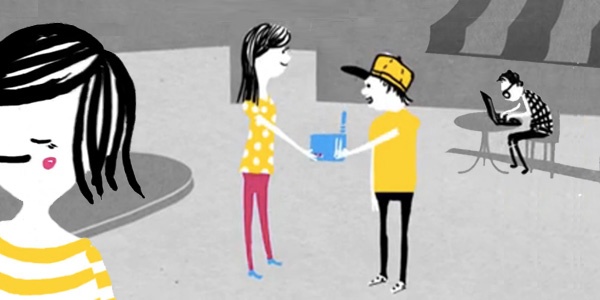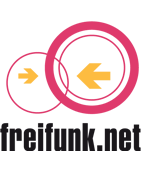Do you want to create a new Freifunk community? Here are some tips to get you started.
Create a new Freifunk Community

Read in and start networking
First, you should get detailed information about the vision of Freifunk. To avoid confusion: Freifunk is about much more than free Wi-Fi.
You can see which services are offered by activists for local groups and read about the latest activities in local communities on the freifunk.net website. You can find out about the background of Freifunk on radio shows and podcasts.
Please contact an existing community near you. The people who have been with Freifunk for years, are the best to help you to get started. We suggest you surf their website and use their contact information or sign up on a local mailing list. Alternatively you can visit the regularly scheduled local meetings or annual Wireless Community Weekends. Technical networking only makes sense if social networking takes place too … because with whom else could you communicate about freifunk.net ? You can find our community calendar here.
Some communities have founded local clubs as soon as they found enough fellow campaigners and the administrative burden could be managed appropriately. If you would like to accept donations without having a club or want to start a fundraising campaign for stickers, flyers, events and infrastructure, then you can find information by contacting the booster club.
Find Collaborators and Share Information
To convince people to join Freifunk is perhaps the most difficult, but also the most important part of the whole enterprise. It is no fun doing it alone. The following strategies have proven valuable:
- local, regular meetings in a hackingspace, a room at university or a cafe / bar can offer beginners and those interested a personal contact
- Create local communication channels, such as a mailing list, Facebook fan page and Twitter account
- Make an entry on our Freifunk API. We take the meta information and show it on the map and the news feed on the freifunk.net homepage. The data is open and can be used for new applications / visualizations.
- Use your contacts, because friends are often easier to convince
- Present your project to thematically related groups such as local computer clubs, self-organized centers or home projects
- Distribute flyers or posters, e.g. at universities, templates. You can ask our web team or the local community.
Most communities have their own website or place to start with wiki pages. Theweb team at freifunk.net can provide you with a simple Freifunk (see demo here) WordPress theme.
Your website will grow as you gradually offer more information, just around a bit and you will find lots of examples and suggestions. Also, you’ll notice:
- The logo is available under Creative Commons, it can be used by all Freifunker. Many communities have developed variations with local reference, some also have simply used name.
- Some stylistic features have been retained by most, so that the logo can be recognised.
Each community can have its own subdomain registered under freifunk.net, which you can get via the contact form. This will be redirected to the main website of your community. This URL (city.freifunk.net) is then used as ESSID in your local Freifunk network.
Later on you can you choose a card solution to represent the free network nodes of your community on your website. The cross-regional libremap.net or a local authority for the local openwifimap are reasonable. Also, RSS news feeds and ICS calendars to offer for those interested make much sense.
Existing communities support start-ups with infrastructure and (technical) knowledge until they can gradually work more independently. What is the community in your area that could / support you you? Find out here!
Getting familiar with the technology and building your own infrastructure
It is a continuous learning process for all Freifunker, no one is perfect. But doing is learning.
Hardware
Limit yourself to a few products in the beginning, you can easily get carried away. With a small number of different hardware, it will be much easier to find problems, to provide support and to get help from others. You can find examples of hardware that other communities have used successfully, here. If in doubt ask neighboring communities or in national mailing lists for tips and hints.
Freifunk firmware
There is no uniform firmware, but various technical approaches are described here.
Some communities have been using gluon as firmware since the beginning of 2014. Gluon has many useful features and provides support for generating a respective local version. A firmware based on OLSR can be created with the Freifunk Meshkit as an alternative. The Meshkit is a configurator for the firmware. For example, it will provide individual firmware images, contact information and location are included. The router is completely configured after the installation and can be used immediately. Each community must create a separate profile for their local version. How to set it up and get it running can be found in this document.
Routing & Gateways
Gateway servers and VPNs are like bridges from the Freifunk network to the Internet, so users do not only use local services, but can also surf the Internet. And the operator of Freifunk network nodes will be protected from secondary liability (a Germany-only problem). The cost to operate a gateway may vary considerably. They depend on the provider from whom you rent the server and on the performance of the machine, the data flow and whether this is a real, physically present or to a virtual machine.
In OLSR networks, each router can take over the functions of a gateway and provide access to the Internet. To connect network clouds that cannot directly see each other and to protect against secondary liability, most communities use VPN services for routing the internet traffic.
You should set up gateways locally. You can get access to VPN – tunnels at the Berlin or Lübeck communities. There are various architectural setups, simply ask the existing, neighboring communities how to do it. Also, here are examples of Bielefeld, Frankfurt that describe how supernodes can be set up later, while already entered in the firmware, so that the router does not need to be re-flashed. Find an architectural overview here.
Internet access
decentralization is important with VPN and gateway providers, in order to avoid being dependent on one supplier. In the past we had to put up with Freifunk server being excluded or VPNs were throttled because Terms and Conditions had been changed. Due to our decentralized and independent setup, something like that is not a total throw back, but mean slow connections and a lot of work for the Freifunker to set everything up again elsewhere.
Last but not least
Free Internet access is a good driving force. However, it also attracts so many who will only consumers. So it is important to provide network-internal content as an incentive to make people to want to participate in the network, eg Local radio streams, a game server, webcam, file servers … Hey, get creative, it is your network!
This page is also available in: German
